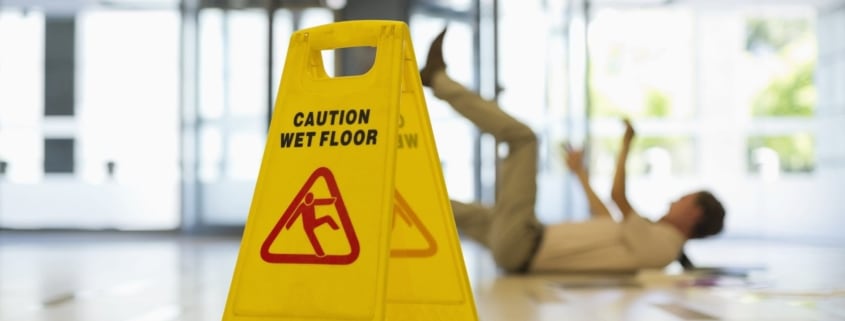What Does “Open & Obvious” Mean in Premises Liability Cases?
When someone gets hurt on the property of another party, a slip-and-fall injury for example, they may be eligible for compensation for their injuries under the legal theory known as “premises liability”. Property owners have a legal duty to ensure that their premises is safe, particularly for visitors who have explicit permission to enter, also known as invitees. These include customers, tenants, and employees.
There is also a lower category of visitor that has implied permission to enter a property, known as licensees. Visitors in this category include neighbors, social guests, and unsolicited salespeople. Landowners owe a duty of care to licensees, but the standard is not quite as high as with invitees.
Trespassers, of course, are owed very little duty because they do not have legal permission to enter the property. The one possible exception being a property that might tend to lure children and cause them to get hurt because of unsafe conditions within.
Unfortunately, even if someone who has permission to enter a property gets injured, it is far from guaranteed that they will be able to recover damages for their losses. Property owners and their insurers typically push back hard against slip and fall injuries and other types of premises liability claims, assuming that they are frivolous. And one of the most common defenses they will use is known as the “open and obvious” defense.
What Does “Open and Obvious” Mean in a Premises Liability Claim?
The “open and obvious” defense essentially asserts that the hazard that caused the visitor’s injury was open and obvious to a reasonable person. In other words, the danger or hazard would be readily apparent to anyone who was paying a reasonable amount of attention, and therefore the plaintiff had ample opportunity to avoid the hazard and escape injury.
In Alabama, the “open and obvious” defense was used successfully in a case that made it to the state Supreme Court in 2009 – DOLGENCORP INC v. TAYLOR. This was a case where a shopper at a Dollar General store tripped over some boxes that were unopened and lying on the floor in the aisle where the plaintiff was walking.
In overturning a lower court’s decision, the Alabama Supreme Court ruled that the boxes were an open and obvious hazard and that the store did not have a legal duty to warn the shopper that they were there. The boxes were stacked approximately knee-high or thigh-high, and the plaintiff in this case admitted that she had seen other boxes of merchandise in the same store on the same occasion and was able to maneuver around them.
One very important distinction that the court made in this case was whether the hazard had to be “consciously appreciated” by a visitor in order to be considered open and obvious, or whether the visitor simply should have observed the hazard. The court affirmed that the defendant did not have to show that the plaintiff was aware of the hazard, but only that the hazard would have been observed by a reasonable person.
How Can the “Open and Obvious” Defense be Overcome?
The ability for defendants in premises liability cases to claim the “open and obvious” defense makes these types of cases more difficult for a plaintiff to win. And this is especially true in a state like Alabama, where they apply the “contributory negligence” standard to personal injury claims. Under contributory negligence, an injured person can be barred from recovering damages if they are found to have “contributed” in any way to the underlying accident or event.
Although winning cases like these is definitely not easy, it is not impossible either. Just because a property owner asserts the “open and obvious” defense does not mean that it is applicable to your case. This defense can be countered if you can show (preferably with evidence such as photos and eyewitness testimony) that the hazard was not open and obvious. For example, maybe the hazard was partially concealed by another object, making it unreasonably difficult for the plaintiff to observe it.
Other possible counters to this defense include:
- The hazard was unavoidable. For example, the boxes were stacked so high and so wide that the shopper could not safely maneuver around them.
- The hazard was unreasonably dangerous. For example, merchandise that is stacked 20-feet high and in the path of shoppers is open and obvious, but it still poses a serious threat to their safety.
- The hazard was a legal violation. If the hazard that causes the visitor’s injury violates a building code or state or federal law, then the property owner can still be held liable, regardless of how open and obvious it is.
Contact an Experienced Personal Injury Lawyer
If you or someone close to you has suffered an injury on the property of another party, recovering compensation will most likely be an uphill battle. For this reason, it is very important to get an attorney involved in your case as soon as possible, so they can go to work immediately to prepare your claim. If your injury happened in Alabama, Hedge Copeland is here to help. Call our office today at (251) 432-8844 or send us an online message to set up a free consultation with one of our attorneys.




